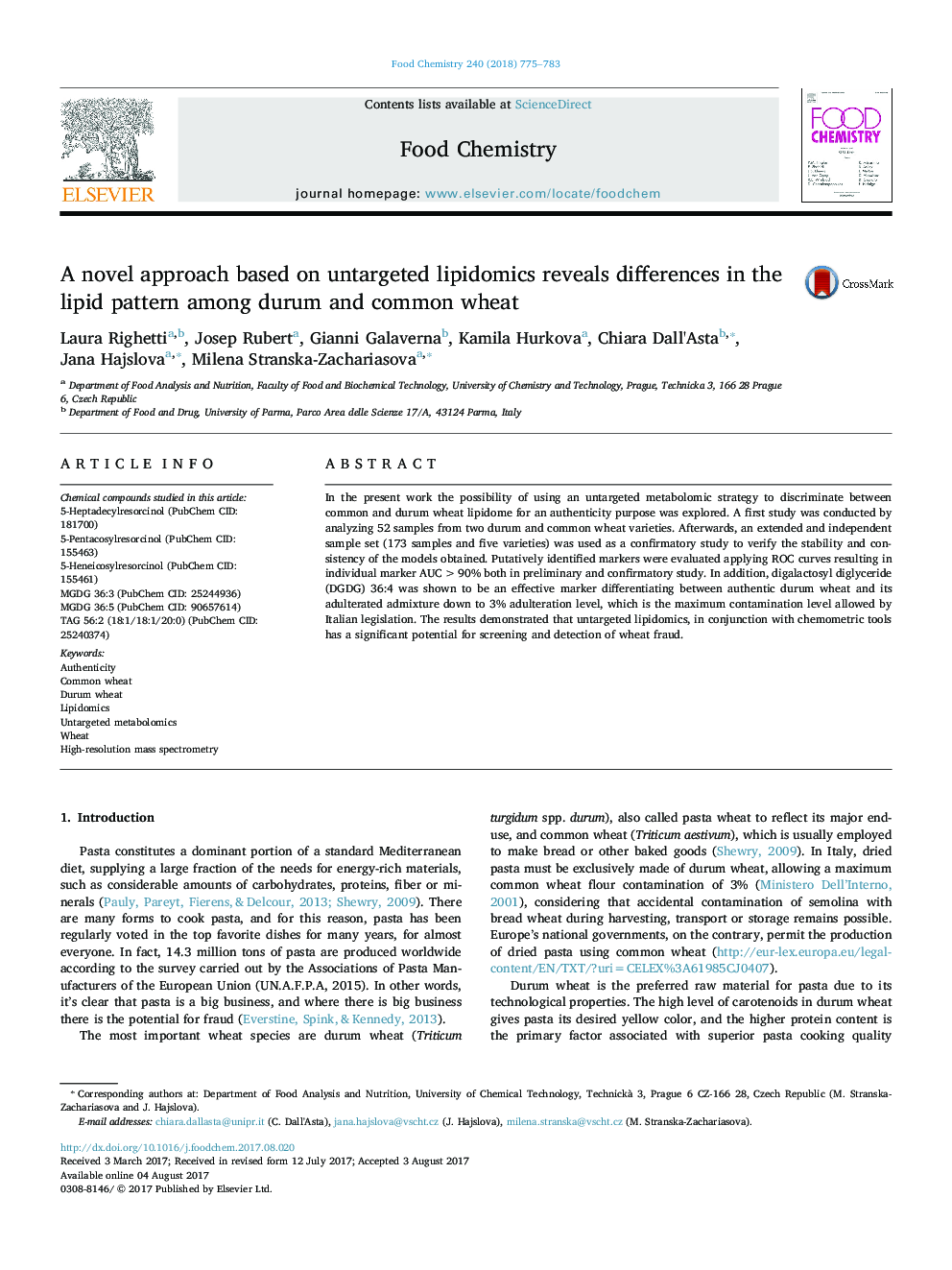| کد مقاله | کد نشریه | سال انتشار | مقاله انگلیسی | نسخه تمام متن |
|---|---|---|---|---|
| 5132518 | 1492052 | 2018 | 9 صفحه PDF | دانلود رایگان |
- Untargeted metabolomics revealed differences between common and durum wheat lipidome.
- The statistical models were validated by using two independent sample sets.
- Authentic durum wheat and adulterated admixture (3% adulteration) were discriminated.
- Putatively identified markers were evaluated applying ROC curves, giving AUC >90%.
In the present work the possibility of using an untargeted metabolomic strategy to discriminate between common and durum wheat lipidome for an authenticity purpose was explored. A first study was conducted by analyzing 52 samples from two durum and common wheat varieties. Afterwards, an extended and independent sample set (173 samples and five varieties) was used as a confirmatory study to verify the stability and consistency of the models obtained. Putatively identified markers were evaluated applying ROC curves resulting in individual marker AUC >90% both in preliminary and confirmatory study. In addition, digalactosyl diglyceride (DGDG) 36:4 was shown to be an effective marker differentiating between authentic durum wheat and its adulterated admixture down to 3% adulteration level, which is the maximum contamination level allowed by Italian legislation. The results demonstrated that untargeted lipidomics, in conjunction with chemometric tools has a significant potential for screening and detection of wheat fraud.
149
Journal: Food Chemistry - Volume 240, 1 February 2018, Pages 775-783
